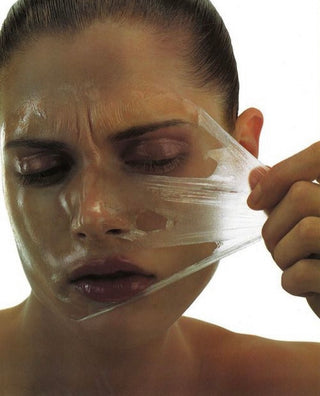
Relaxing in the warmth of the sun is undoubtedly enjoyable, but are you aware of the potential risks? Protecting your skin from harmful rays is essential to prevent sunburn, reduce the risk of skin cancer and premature ageing. Here's what you need to know:
UVA vs. UVB vs. Blue Light
UVA, UVB and blue light are different components of the electromagnetic spectrum with varying effects on the skin. For example, UVA rays have longer wavelengths and penetrate deeper into the skin than UVB rays. UVA is present throughout the year and can pass through clouds and windows, and it's primarily linked to skin aging (remember “A" for ageing). UVB rays have shorter wavelengths and primarily affect the outer layer of the skin. They are the main cause of sunburn and play a significant role in the development of skin cancer (remember: “B" for burn). UVB is more intense during midday and summer months, and the intensity increases with increasing altitude. Blue light has recently sparked interest since it's not only emitted by the sun, but by electronic devices like smartphones, tablets, and computer screens. Research suggests that excessive exposure to blue light may contribute to skin aging and hyperpigmentation. Your sunscreen should therefore have a broad-spectrum filter to ideally protect against UVA, UVB and blue light.
Sun Protection Factor (SPF)
Sun Protection Factor (SPF) is a numerical rating that indicates a sunscreen's effectiveness in blocking UVB rays, but it does not measure protection against UVA or blue light.
SPF measures the degree to which a sunscreen extends the time it takes for UVB rays to redden the skin compared to unprotected skin. Higher SPF values provide greater protection. If your skin would redden after 10 minutes in the sun without sun protection, SPF 30 would prolong this time by the factor 30 (10 minutes x SPF 30 = 300 minutes).
SPF 15 vs. 30 vs. 50
There is no linear relationship between SPF and protection. For example, SPF 15 filters out about 93% of UVB rays, while SPF 30 filters out about 97%. The increase in protection becomes less significant as the SPF value increases. However, from a dermatological point of view, I recommend using SPF 50.
Chemical vs. Mineral Filters
Two main types of SPF filters —chemical and mineral— shield the skin from UV rays differently. The choice ultimately depends on individual preferences and needs.
Chemical filters work by absorbing UV radiation and converting it into heat energy. These filters are often transparent and provide a lightweight and cosmetically elegant application. Mineral filters act as physical barriers that reflect and scatter UV radiation away from the skin. These filters are often referred to as physical or inorganic filters. They are less likely to cause skin irritation or allergic reactions compared to chemical filters, but depending on the formula, may leave a white cast on the skin. Thus, individuals with sensitive skin or a history of skin allergies may be more prone to irritation from chemical filters. I also recommend babies and children should use mineral filters.
Sun Protection Facts From Your Dermatologist:
1. People with darker skin are not protected from sun damage or skin cancer. Everyone, regardless of skin tone, should prioritize sun protection to maintain healthy skin.
2. Reapplying sunscreen does not prolong your maximum daily protection time. However, reapplication is advised every 1-2 hours and especially after a swim or rubbing the skin with a towel to maintain the initial time of protection.
3. Avoiding the sun in the shade and wearing dark, thigh-fitting textiles/hats/glasses offer a greater protection from sun compared to the use of sunscreen.
4. Sunscreen should be applied as the last step of your individual morning skincare routine (after cleansing, cream, and optional serum). Wait 1 to 2 minutes between each layer to improve cosmetic results.
5. While there are various cosmetics products on the market that contain SPF, two separate products (face cream and SPF) are recommended from a dermatologic standpoint to guarantee a better coverage and protection.
6. The advised amount of sunscreen for adults might be more than you think. The fingertip unit (FTU) is a simple dosage guide. One unit refers to a strip of product squeezed onto the index finger from the tip to the first crease: face and neck: 2.5 FTU; one arm: 3 FTU; one leg: 6 FTU, entire body: 40 FTU.
References:
-Kohli I, Nicholson CL, Williams JD et al. Greater efficacy of SPF 100+ sunscreen compared with SPF 50+ in sunburn prevention during 5 consecutive days of sunlight exposure: A randomized, double-blind clinical trial. J Am Acad Dermatol 2020; 82: 869-877
-Schneider SL, Lim HW. Review of environmental effects of oxybenzone and other sunscreen active ingredients. J Am Acad Dermatol 2019; 80: 266-271
-Young AR, Claveau J, Rossi AB. Ultraviolet radiation and the skin: Photobiology and sunscreen photoprotection. J Am Acad Dermatol 2017; 76: S100-S109
-Guan LL, Lim HW, Mohammad TF. Sunscreens and Photoaging: A Review of Current Literature. Am J Clin Dermatol 2021; 22: 819-828
-Tsai J, Chien AL. Photoprotection for Skin of Color. Am J Clin Dermatol 2022; 23: 195-205















